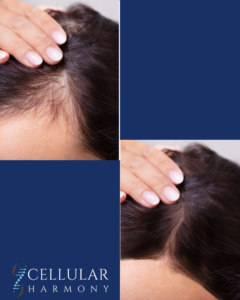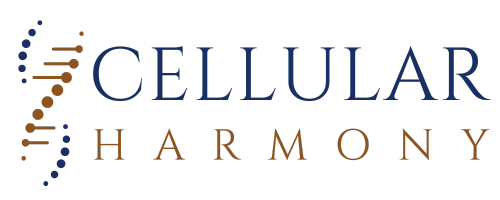Stem Cells for Hair Loss in Men(Androgenic Alopecia)
 Key Points
Key Points
- Research suggests PRP (Platelet-Rich Plasma) can help stimulate hair growth for men with androgenic hair loss, especially when combined with other treatments.
- It seems likely that adding Wharton’s jelly stem cells to PRP may enhance results, though more studies are needed to confirm.
- The evidence leans toward these treatments being effective for men with thinning hair, not shiny bald scalps, emphasizing early action.
- These methods avoid systemic side effects like erectile dysfunction linked to oral finasteride, offering a safer alternative.
What Are PRP and Wharton’s Jelly Cells for Hair Loss?
PRP involves taking your blood, concentrating the platelets, and injecting them into your scalp to boost hair growth. Wharton’s jelly cells, from the umbilical cord, are stem cells that might help regenerate hair follicles. For men with androgenic hair loss (male pattern baldness), these treatments aim to stimulate existing follicles, not create new ones, so you need some hair left for them to work.
How Effective Are They Compared to Just PRP?
Studies show PRP can increase hair density and thickness, with some men seeing results in months. Adding Wharton’s jelly cells could potentially amplify this by providing more growth factors, but research is still emerging. Some providers combine these with topical minoxidil, finasteride, peptides like GHK-Cu, and red light therapy for better outcomes, focusing on non-surgical options.
Avoiding Side Effects and Surgery

Unlike oral finasteride, which can cause finasteride syndrome (persistent sexual and mental health issues), topical treatments and PRP/stem cell therapies don’t typically cause systemic side effects. Surgery, like hair transplants, involves costs, recovery time, and risks, making these alternatives appealing for those wanting to avoid the knife.
Why Time Matters
The earlier you start, the better—delaying could mean fewer follicles to save. If you’re thinning but not shiny bald, now’s the time to explore these options to keep your hair looking full.
Survey Note: Detailed Analysis of Stem Cell Treatments Using PRP and Wharton’s Jelly for Hair Loss in Men
This detailed analysis explores the use of Platelet-Rich Plasma (PRP) and Wharton’s jelly stem cells versus PRP alone for treating hair loss in men, particularly androgenic alopecia, while adhering to the user’s request for an engaging, non-salesy blog.
Background and Context
Hair loss, specifically androgenic alopecia, affects millions of men, often starting with a receding hairline or thinning crown. Traditional treatments like minoxidil and finasteride have been standard, but they come with limitations and side effects, prompting interest in regenerative therapies like PRP and stem cell treatments.
Understanding PRP for Hair Loss
PRP therapy involves drawing blood, processing it to concentrate platelets, and injecting the plasma into the scalp. Platelets release growth factors that can stimulate hair follicles, potentially extending the growth phase and preventing further shedding.
Introducing Wharton’s Jelly Stem Cells
Wharton’s jelly, a gelatinous tissue in the umbilical cord, is rich in mesenchymal stem cells (MSCs). These cells can differentiate into various cell types and are known for their regenerative properties.
Comparing PRP Alone vs. PRP with Wharton’s Jelly Cells
While direct studies on combining PRP with Wharton’s jelly cells for hair loss are limited, broader research on PRP and stem cell therapy suggests synergy.
Effectiveness and Protocols
Effectiveness varies, but PRP alone has shown hair density improvements in clinical trials, with peak results at 3 months in some cases. Adding Wharton’s jelly cells could enhance this, given their regenerative potential, but more human studies are needed.
Avoiding Systemic Side Effects
A key advantage is avoiding systemic side effects of oral finasteride, linked to erectile dysfunction and finasteride syndrome—a set of persistent symptoms including sexual dysfunction and depression.
Comparison to Surgery and Urgency
Hair transplant surgery, while effective, involves costs, recovery, and potential complications like scarring. Non-surgical options like PRP and stem cell therapy offer less invasiveness, with little downtime.
Target Audience and Practical Considerations
The audience is men with thinning or balding hair, not completely bald, seeking non-surgical solutions. The urgency lies in acting before follicles are lost, as early intervention maximizes effectiveness.
Detailed Table: Comparison of Treatments
| Treatment | Mechanism | Effectiveness | Side Effects | Surgical? |
|---|---|---|---|---|
| PRP Alone | Stimulates follicles with growth factors | Moderate, varies by patient | Minimal, mostly injection site | No |
| PRP + Wharton’s Jelly Cells | Combines growth factors with regeneration | Potentially higher, research ongoing | Minimal, safe profile | No |
| Oral Finasteride | Blocks hormone causing hair loss | High, but systemic effects | ED, finasteride syndrome | No |
| Hair Transplant Surgery | Moves follicles to bald areas | High, long-term | Scarring, cost, recovery time | Yes |
Conclusion and Action
PRP and Wharton’s jelly stem cell therapy offer a promising, non-surgical approach for men with androgenic hair loss, potentially more effective than PRP alone and safer than oral finasteride.
Key Citations
- PRP for Hair Loss: Efficacy, Safety, and Cost
- Wharton’s jelly-derived mesenchymal stem cells in the treatment of four patients with alopecia areata
- Platelet-rich plasma: Does the cure for hair loss lie within our blood?
- Promotion of hair growth by a conditioned medium from human umbilical cord mesenchymal stem cells
- The Effect of Platelet-Rich Plasma in Hair Regrowth
- PRP and Stem Cell | Hair Loss Treatments Kansas City
- Are Stem Cell and PRP Therapy Effective for Hair Regrowth?
- Claris Clinic PRP & Stem Cells
 Key Points
Key Points
- Research suggests PRP (Platelet-Rich Plasma) can help stimulate hair growth for men with androgenic hair loss, especially when combined with other treatments.
- It seems likely that adding Wharton’s jelly stem cells to PRP may enhance results, though more studies are needed to confirm.
- The evidence leans toward these treatments being effective for men with thinning hair, not shiny bald scalps, emphasizing early action.
- These methods avoid systemic side effects like erectile dysfunction linked to oral finasteride, offering a safer alternative.
What Are PRP and Wharton’s Jelly Cells for Hair Loss?
PRP involves taking your blood, concentrating the platelets, and injecting them into your scalp to boost hair growth. Wharton’s jelly cells, from the umbilical cord, are stem cells that might help regenerate hair follicles. For men with androgenic hair loss (male pattern baldness), these treatments aim to stimulate existing follicles, not create new ones, so you need some hair left for them to work.
How Effective Are They Compared to Just PRP?
Studies show PRP can increase hair density and thickness, with some men seeing results in months. Adding Wharton’s jelly cells could potentially amplify this by providing more growth factors, but research is still emerging. Some providers combine these with topical minoxidil, finasteride, peptides like GHK-Cu, and red light therapy for better outcomes, focusing on non-surgical options.
Avoiding Side Effects and Surgery

Unlike oral finasteride, which can cause finasteride syndrome (persistent sexual and mental health issues), topical treatments and PRP/stem cell therapies don’t typically cause systemic side effects. Surgery, like hair transplants, involves costs, recovery time, and risks, making these alternatives appealing for those wanting to avoid the knife.
Why Time Matters
The earlier you start, the better—delaying could mean fewer follicles to save. If you’re thinning but not shiny bald, now’s the time to explore these options to keep your hair looking full.
Survey Note: Detailed Analysis of Stem Cell Treatments Using PRP and Wharton’s Jelly for Hair Loss in Men
This detailed analysis explores the use of Platelet-Rich Plasma (PRP) and Wharton’s jelly stem cells versus PRP alone for treating hair loss in men, particularly androgenic alopecia, while adhering to the user’s request for an engaging, non-salesy blog.
Background and Context
Hair loss, specifically androgenic alopecia, affects millions of men, often starting with a receding hairline or thinning crown. Traditional treatments like minoxidil and finasteride have been standard, but they come with limitations and side effects, prompting interest in regenerative therapies like PRP and stem cell treatments.
Understanding PRP for Hair Loss
PRP therapy involves drawing blood, processing it to concentrate platelets, and injecting the plasma into the scalp. Platelets release growth factors that can stimulate hair follicles, potentially extending the growth phase and preventing further shedding.
Introducing Wharton’s Jelly Stem Cells
Wharton’s jelly, a gelatinous tissue in the umbilical cord, is rich in mesenchymal stem cells (MSCs). These cells can differentiate into various cell types and are known for their regenerative properties.
Comparing PRP Alone vs. PRP with Wharton’s Jelly Cells
While direct studies on combining PRP with Wharton’s jelly cells for hair loss are limited, broader research on PRP and stem cell therapy suggests synergy.
Effectiveness and Protocols
Effectiveness varies, but PRP alone has shown hair density improvements in clinical trials, with peak results at 3 months in some cases. Adding Wharton’s jelly cells could enhance this, given their regenerative potential, but more human studies are needed.
Avoiding Systemic Side Effects
A key advantage is avoiding systemic side effects of oral finasteride, linked to erectile dysfunction and finasteride syndrome—a set of persistent symptoms including sexual dysfunction and depression.
Comparison to Surgery and Urgency
Hair transplant surgery, while effective, involves costs, recovery, and potential complications like scarring. Non-surgical options like PRP and stem cell therapy offer less invasiveness, with little downtime.
Target Audience and Practical Considerations
The audience is men with thinning or balding hair, not completely bald, seeking non-surgical solutions. The urgency lies in acting before follicles are lost, as early intervention maximizes effectiveness.
Detailed Table: Comparison of Treatments
| Treatment | Mechanism | Effectiveness | Side Effects | Surgical? |
|---|---|---|---|---|
| PRP Alone | Stimulates follicles with growth factors | Moderate, varies by patient | Minimal, mostly injection site | No |
| PRP + Wharton’s Jelly Cells | Combines growth factors with regeneration | Potentially higher, research ongoing | Minimal, safe profile | No |
| Oral Finasteride | Blocks hormone causing hair loss | High, but systemic effects | ED, finasteride syndrome | No |
| Hair Transplant Surgery | Moves follicles to bald areas | High, long-term | Scarring, cost, recovery time | Yes |
Conclusion and Action
PRP and Wharton’s jelly stem cell therapy offer a promising, non-surgical approach for men with androgenic hair loss, potentially more effective than PRP alone and safer than oral finasteride.
Key Citations
- PRP for Hair Loss: Efficacy, Safety, and Cost
- Wharton’s jelly-derived mesenchymal stem cells in the treatment of four patients with alopecia areata
- Platelet-rich plasma: Does the cure for hair loss lie within our blood?
- Promotion of hair growth by a conditioned medium from human umbilical cord mesenchymal stem cells
- The Effect of Platelet-Rich Plasma in Hair Regrowth
- PRP and Stem Cell | Hair Loss Treatments Kansas City
- Are Stem Cell and PRP Therapy Effective for Hair Regrowth?
- Claris Clinic PRP & Stem Cells


